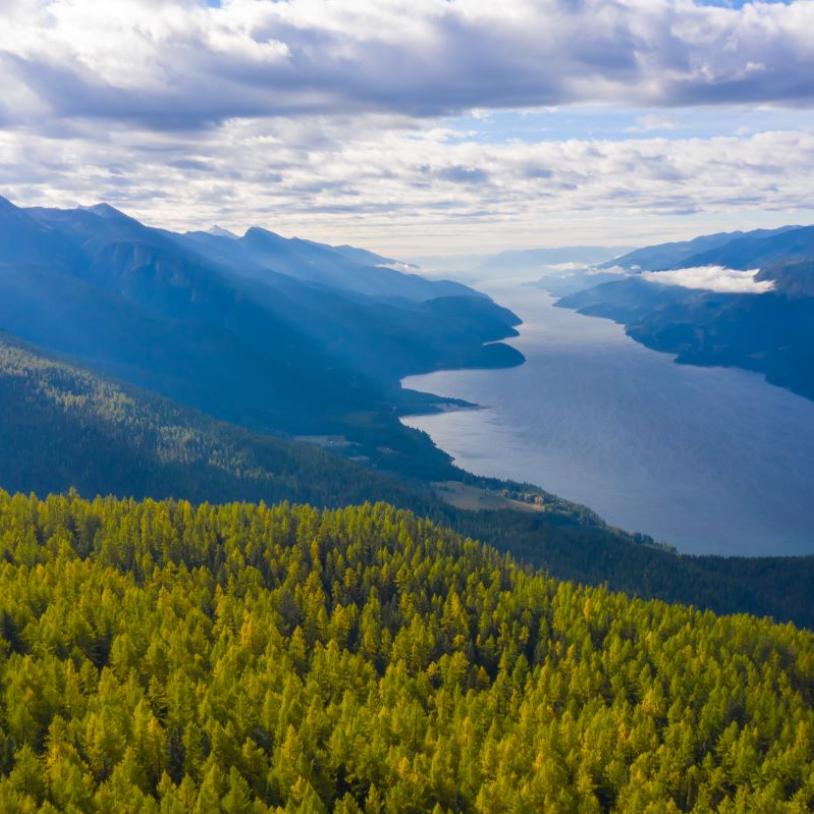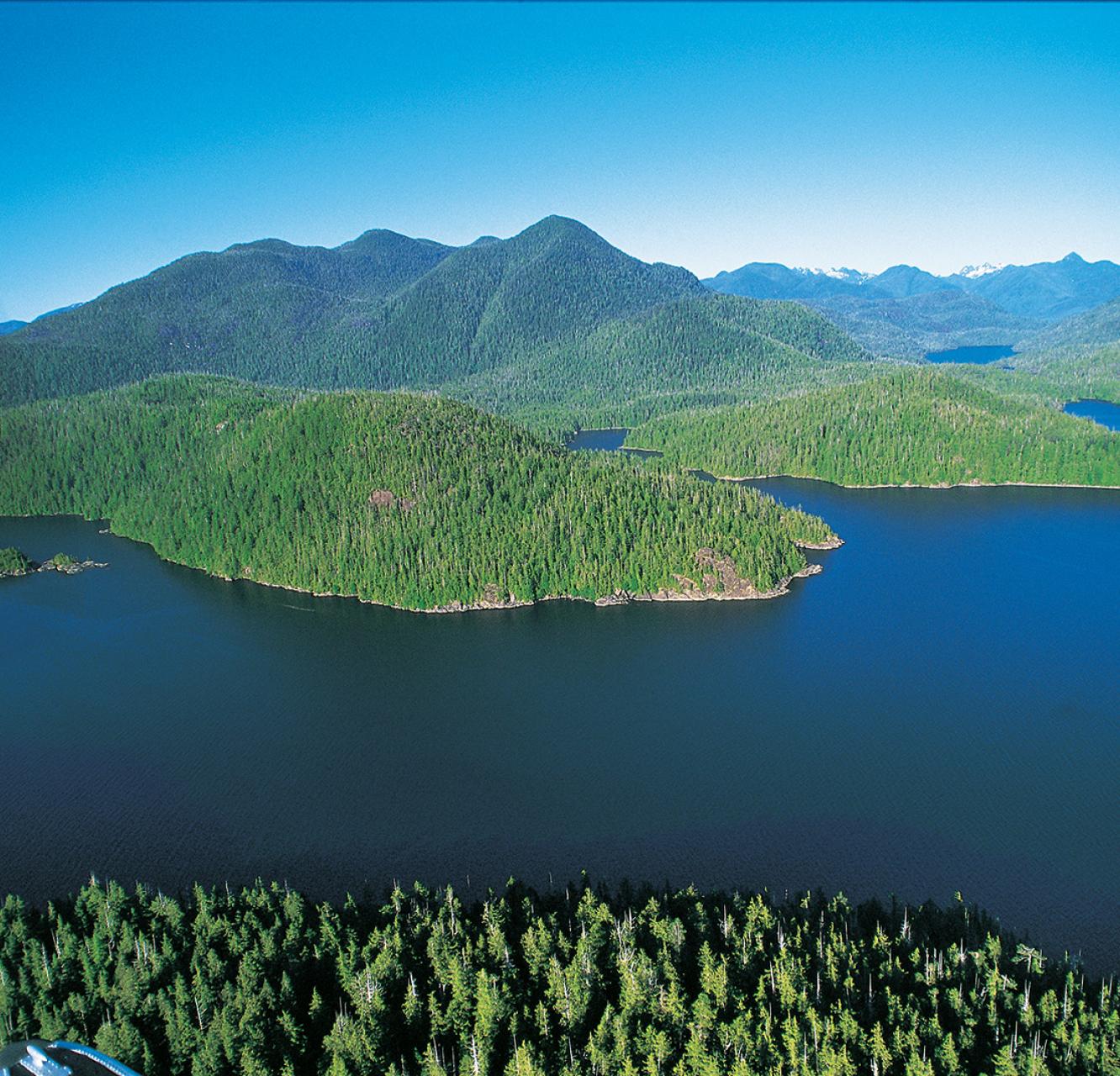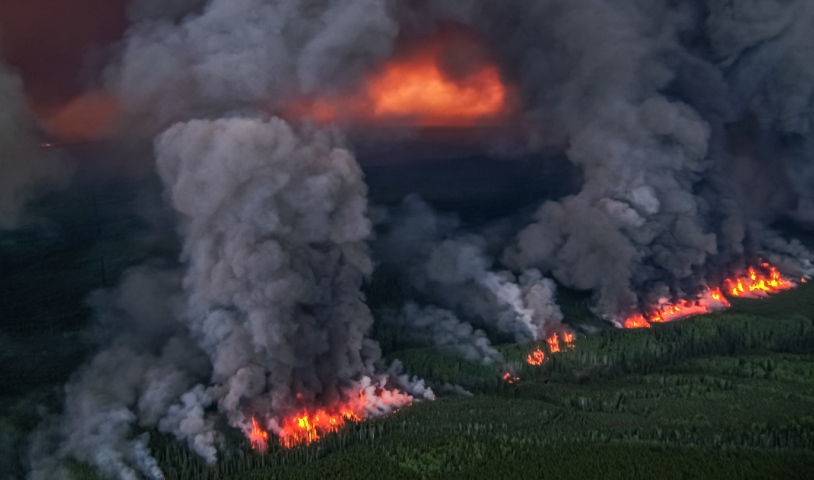B.C. parks falling by the wayside
Friday, February 25, 2011
Century-old legacy tarnished by lack of funding and management; critics agree: 'We haven't done the follow-up to care for them and manage them'
Joan Sawicki lives in a park, which befits a former minister of environment.
The park is Tweedsmuir, largest in the province at 981,000 hectares, with a range of ecosystems that extend from the pastel volcanic peaks of the Chilcotin plateau to the dripping temperate rainforests of the Bella Coola Valley.
Sawicki and her husband, Gary Runka, a land consultant who once chaired the Agricultural Land Commission, own two hectares formerly owned by the legendary guide outfitter and park advocate Tommy Walker.
Their log home is swaddled in old-growth Douglas firs and western red cedars and is situated above the Atnarko River, a salmon-rich tributary of the Bella Coola River that crawls with grizzlies the size of chesterfields.
No biggie for someone who's braved the bear pit of provincial politics.
"Bears wander through here all the time, taking a shortcut from one salmon spot on the river to another," she says over coffee in her living room. "I've tried to learn how to handle myself in the presence of grizzlies. I've grown in my confidence."
Sawicki and Runka moved here in 2001 after Gordon Campbell's Liberal sweep left only two NDP MLAs standing. "One month after closing my [Burnaby-Willingdon] constituency office, the moving van was here," she says. "The longer we're here, the harder it is to drag us out."
Sawicki served as environment minister with the NDP from 1999 to 2000 and is well positioned to speak to the centenary of the B.C. park system on March 1 - 100 years after the creation of the first provincial park, Strathcona, on Vancouver Island in 1911.
"I've always had a passion for parks; they're special places," she says. "In the 1970s and 1980s there was a real park culture, a sense we had the best park system in the world. And you felt it when you were in the parks. You had rangers, you'd meet them on the trails, and they'd talk about what you were seeing."
She refers to the "remarkable collective achievement" of doubling the park system in the 1990s under premier Mike Harcourt, a public policy decision on the scale of Dave Barrett's agricultural land reserve in the early 1970s.
In his forthcoming book, B.C.'s Magnificent Parks (Harbour Publishing), Jim Anderson, a retired senior park planner, confirms: "With the change in the political climate, a parks system that had taken 80 years to evolve would double in size within a single decade. In retrospect, it can be acknowledged that the 1990s was the most dramatic decade in the history of the B.C. provincial park system."
While quick to embrace the accomplishments of the provincial park system, Sawicki is equally familiar with its shortcomings.
"We haven't done the follow-up to care for them and manage them, to understand what's in them, to make all those challenging trade-offs of how you balance conservation first with recreation. We've saved the special places and put a line around them, but we haven't done that tough stuff. That's the big challenge, if we can meet it."
SCATHING CRITICISM
B.C.'s auditor general echoed those sentiments last August in a report that concluded the Ministry of Environment had failed to meet its mandate to preserve the ecological integrity of parks and protected areas. It found that, despite its "declared intentions and clear vision to conserve the ecological integrity in B.C.'s parks and protected areas, the Ministry of Environment is not successfully meeting this goal."
Program plans are incomplete and lack adequate performance measures, conservation policies are not being consistently upheld, and the parks and protected-area system is not designed to ensure ecological integrity, the report said.
As an example, it cited the establishment of Pine Cone Burke Provincial Park in 1995 as an area to protect old-growth forests, nationally recognized wetlands and habitat for important and vulnerable species such as the grizzly bear, tailed frog and great blue heron.
To date, there is no management plan in place for the park.
The auditor general made several recommendations for how the ministry should update its park plan, including: clarification of "ecological integrity and performance targets;" ensuring that conservation program policies are "consistently upheld;" a review of its master-plans policy to clarify what type of management plan is required for each park and protected area; and periodic reporting to the legislature and public on the issue.
How fast the province responds to the scathing report remains to be seen.
NDP leadership candidates Adrian Dix and Mike Farnworth vow to increase funding for the B.C. park system, while John Horgan promises to restore the "ecological integrity" of B.C. parks and protected areas.
As for the Liberal leadership candidates, George Abbott has promised a 10-per-cent funding increase and the elimination of day-use parking fees. Christy Clark says she'll cut parking fees in parks.
Speaking for the current Liberal government, Environment Minister Murray Coell prefers to point to the legacy of park creation in B.C. in terms of conservation and recreation. The sort of management initiatives outlined by the auditor general will have to wait.
"I see a continuing development of parks in the future, continuing to set aside areas as citizens want, and the development of trails and camping facilities and all that on an ongoing basis into the future. A lot of the parkland set aside is for future generations to develop. A lot will be in a dormant phase until future generations decide what to do with them. The most important was to preserve the areas, to set aside properties for future generations."
Looking into the future, Coell foresees more cooperation with Parks Canada and more co-management agreements with First Nations, who, on the coast at least, are tending to prefer conservancies over Class A parks due to their flexibility.
Conservancies prohibit commercial logging, mining and hydroelectric power generation, but allow local run-of-the-river projects and "a wider range of low impact, compatible economic opportunities than a Class A park," the province says.
"It's a healthy thing and great for tourism," Coell said of park partnerships. "First Nations see how it can reinforce their heritage as well."
NEGLECTED WILDERNESS
The Ministry of Environment boasts there are 991 provincial parks, recreation areas, conservancies, ecological reserves and protected areas covering 13.6 per cent of the land base - or approximately 13.15 million hectares managed by B.C. Parks - a higher percentage of the land base dedicated to protected areas than any other provincial Canadian jurisdiction. The figure rises to 14.27 per cent with federally protected lands. But critics say that tells only half the story.
Gwen Barlee, policy director for the Wilderness Committee, sees "an assault on parks" due primarily to lack of funding. She cited a decline in the annual parks budget to $30 million this year from $40 million in 1991/92, despite a doubling of parkland.
Provincewide, there are only 10 permanent park rangers - more endangered than the Vancouver Island marmot, of which there are about 300 in the field - plus another 87 seasonal rangers.
"You need to have staff on the ground, management plans in place, and none of that is happening," Barlee says. "The government has turned its back on parks. How much more can parks take?"
In the absence of on-site management, park trails can become officially closed or effectively closed due to windfall, while uncontrolled activities including the use of off-road motorcycles and all-terrain vehicles can flourish to the detriment of the environment.
Doreen Olson, a member of the South Okanagan Naturalists Club who lives on 30 hectares in the Penticton suburb of Kaleden, says she has witnessed extensive damage to environmentally sensitive grasslands and wetlands in areas such as White Lake and South Okanagan grasslands protected areas.
"It's so damaging," she says, noting other problems involve illegal woodcutting and lack of signs. "People don't recognize how fragile they are. They look and go, 'Wow, this is great open space.'"
On Vancouver Island, Bob St. John of Friends of Strathcona said about 60 volunteers launched a "take back the park" initiative and constructed a bypass route around a bridge that was in such disrepair it resulted in the official closing of the popular Crest Mountain Trail. The action resulted in B.C. Parks rebuilding the bridge.
Meanwhile, the group is protesting plans by Clayoquot Wilderness Resort to develop a commercial horse trail and camp for affluent guests in the Bedwell Valley of Strathcona Park.
"That's the foothold," he says. "We speculate the government wants to starve parks of public funding and then invite private funding in and then the government can wash its hands of the whole situation."
Mel Turner served about 30 years with B.C. Parks, mainly in planning and conservation in the Lower Mainland, before retiring in 2003. He is now on the board of the Elders Council for Parks, a group of mainly retired national, provincial and regional park employees.
He agrees that parks have fallen into neglect, citing as an example the deterioration of trails and campsites at Black Tusk in Garibaldi Provincial Park.
The challenge is to convince politicians that parks are important, not just for conservation and recreation, but for the health of individuals and the planet. "Parks are struggling," he says, noting parks in other jurisdictions are in a similar state. "They're looking for financial support and citizen support."
CALLS FOR MORE PARKLAND
Chloe O'Loughlin, executive director of the Canadian Parks and Wilderness Society, fondly recalls camping with her parents in provincial parks around the province and listening to park interpreters in the evening - an event that helps to connect children with nature but has been sadly missing in recent years. "Now that parks are 100, it's time to put the funding back," she argues.
The province says it is "working to renew" interpretive programs and expects to have more information in a few weeks.
O'Loughlin argues that B.C., given its diversity of wildlife, has an obligation to the world to maintain its parks and the species that depend upon them to ensure animals such as the grizzly bear "don't become the woolly mammoth."
With the looming threat of climate change, B.C.'s current park allocation of almost 14 per cent of the province is "definitely not enough" to meet conservation goals and connectivity of green spaces, she says, adding marine parks remain sorely lacking.
The global Nature Needs Half initiative suggests that "protecting and interconnecting at least half of the planet's land and water is necessary to sustain the health, function and diversity of all life."
The 2010 report A New Climate For Conservation by Jim Pojar, a former forest ecologist with the B.C. government and co-author of The Plants of Coastal British Columbia, recommends, in part, interconnected core conservation networks, new land designations and/or tenures that recognize areas conserved for carbon stewardship, forest conservation and ecological restoration projects, and legislation protecting ecosystems and species at risk.
The final word on parks goes to Ric Slaco, vice-president and chief forester for International Forest Products, who's been involved in protected-area issues for a quarter century: first, in Clayoquot Sound; then the Commission on Resources and Environment on Vancouver Island; the land and resource management plan for the Lower Mainland region; and, finally, in the mid-coast region, part of the Great Bear Rainforest.
In the early days, the forest industry viewed parks as an economic threat because they chipped away at areas that might otherwise be logged; in return, environmentalists viewed the industry as the enemy. "There has been quite an evolution," says Slaco. "Parks are now part of the package that we're selling with our products. We're selling good forestry, which includes making sure there are areas set aside, that there is ecological representation, and when we sell our products someone can feel good about it."
While future societies will determine the growth and management of parks, Slaco advises people not to think of them as postcards, places frozen in time.
"Nature doesn't stand still, nature changes," he says. "Maybe parks that are now parks shouldn't be parks. And maybe those that aren't parks maybe could be parks. You have to be open-minded enough to be thinking that way."
Over the last century, parks have come and gone in B.C., their borders erased or altered to appease economic considerations such as mining, logging and hydroelectric production.
Whether today's vision of parks stands the test of time ultimately rests in the hands - and resolve - of future generations.




